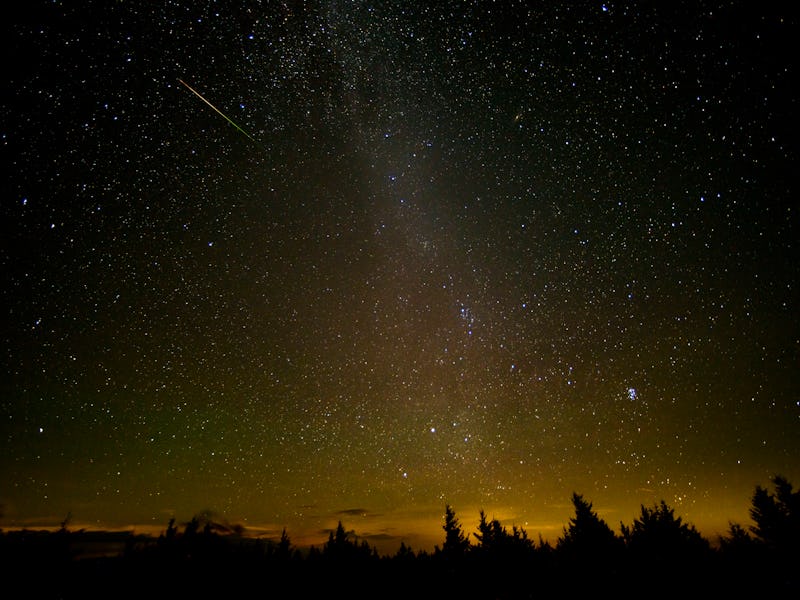Celebrate Winter Solstice 2017 by Watching the Ursid Meteor Shower
A stellar holiday party.

If you’ve never gotten into stargazing, tonight is the night night to do it.
Not only does Thursday, December 21 mark the winter solstice — or the longest night of the year — but shortly after midnight on December 22, the Ursid Meteor Shower will peak.
This celestial hail storm gets its name from the constellation Ursa Minor — the area from which the meteors seem to be radiating from — but the shower’s parent body is an icy comet named Tuttle that orbits the sun every 14 years and was discovered in 1790. Typically, folks watching can expect around five to ten meteors per hour.
It’s worth noting that the Ursids won’t be as eye-popping the Geminids — a shower that streaked across the sky earlier this month — which can produce up to 120 meteors per hour. That said, on some rare occasions, the Ursids have dazzled viewers with flares of 50 to 100 meteors per hour.
Here’s how to make sure you catch a glimpse of the Ursids:
When and where can you see the Ursids Meteor Shower?
The shower is active every year between December 17 and December 24. However, tonight is the longest night of the year, plus the Ursids are peaking giving you ample time to bask in the universe’s beauty in the darkness.
While the meteors might seem to be emerging from Ursa Minor they can appear anywhere in the sky. So just look up and you’re sure to see a few somewhere.
Light pollution might be an issue.
Even though this will be the longest night of the year, it’s the same day as a full moon. The bright light from that might obscure you from seeing some of the meteors crossing the sky.
To make sure this isn’t an issue, go to the darkest place you can find. Any other lights from building or streets will intensify the light the moon is already producing which will lead to you seeing less of the Ursids.
Happy meteor-watching, everyone!